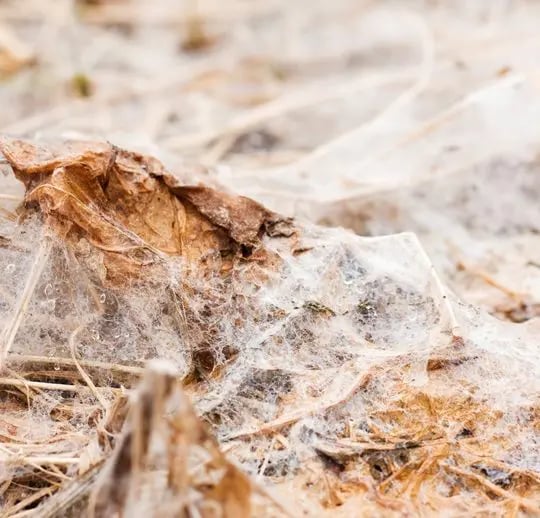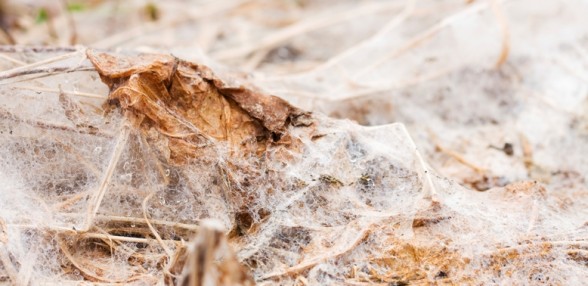When Your Lawn Catches Cold, You Get Snow Mold


Snow Mold in spring
When the snow begins to melt in spring, some homeowners will be due for a nasty surprise—namely, that of snow mold. Snow mold is a fungal lawn disease that strikes in the wintertime and can cause noticeable damage to your lawn come spring. Learn how to recognize snow mold when you see it, the factors it is caused by, and what you can do to prevent it.
What to Look For
Snow mold comes in two different forms– a pink form, also known as Fusarium patch, and a whitish-gray form, also known as Typhula blight. Fusarium patch is the worse of the two for your lawn, causing more destruction than Typhula blight, which only affects the leaves of plants.
Both types of snow mold resemble circular patches of cobweb covering the grass. Fusarium patch is recognizable by its salmon pink color, while Typhula blight looks more like regular cobwebs with the addition of tiny black blots that appear on the blades of grass. The two types of snow mold will often grow together.
Causes of Snow Mold
Snow mold can form on your lawn due to a variety of factors. If snow falls before the ground and grass underneath are completely frozen, the trapped moisture and relative warmth underneath create the perfect environment for snow mold to thrive in. Long grass, unraked leaves and late fall fertilization of the soil can also contribute to trapping moisture and warmth under snow, having the same effect.
Snow Mold Prevention
To keep your lawn from getting sick with snow mold, you should watch the forecast for snow and take the following preventative steps if you suspect snow is imminent:
- Mow Your Lawn – If the grass on your lawn has grown long over the summer, make sure to give it a good trim come fall in preparation for the winter months, when shorter is better.
- Rake Your Lawn – Once fall has blown all the leaves off of the trees and onto your lawn, moving them off again and composting them will keep them from trapping moisture and causing mold to grow.
- Avoid Late Fall Fertilization – The best time for lawn fertilization in most places is early fall (in spring, energy stored in the grass’ roots give it all the “oomph” it needs to grow strong). Fertilizing too late in fall risks warmer ground temperatures underneath the snow, and therefore snow mold.
If you live in the state of Pennsylvania and your lawn has contracted a fungal disease such as snow mold, call Green Lawn today for a professional lawn analysis and recommended treatment plan.